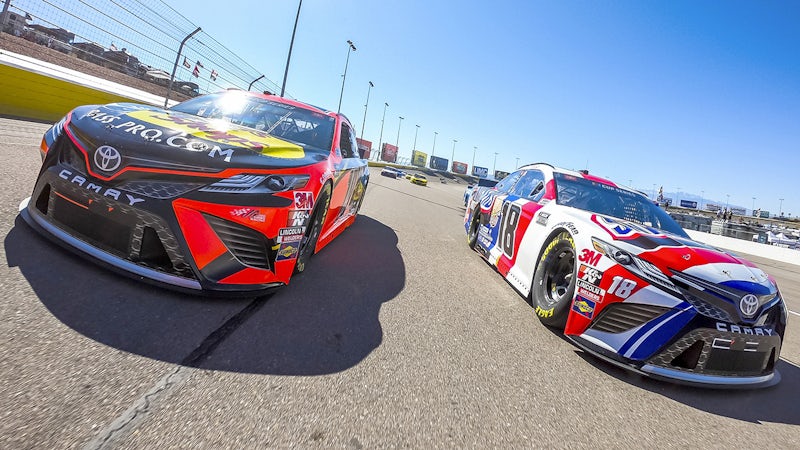Using NX and Simcenter to reduce cycle and setup time, saving $1,117 per part
Siemens solutions enable Joe Gibbs Racing to optimize weight distribution and comply with NASCAR regulations
Joe Gibbs Racing
Joe Gibbs Racing, owned by former Washington Redskins head coach Joe Gibbs, competes in the NASCAR Cup and Xfinity series.
http://www.joegibbsracing.com- Headquarters:
- Huntersville, North Carolina, United States
- Products:
- Heeds, NX, NX CAD, NX CAM, Simcenter Products, Simcenter STAR-CCM+
- Industry Sector:
- Automotive & transportation
We do everything we can using Siemens Digital Industries Software tools. It is totally seamless, enabling us to work without doing any translations.
Joe Gibbs Racing
Facing multiple challenges
Racers in the NASCAR® Cup series are tasked with preparing their teams to race almost every weekend for more than 10 months. Not only are they faced with this marathon effort, but they must compete on a different style track almost every week, including short courses, ovals, road courses, and super speedways, increasing the complexity and difficulty even more. This series provides a unique challenge in motorsports.
Joe Gibbs Racing (JGR) designs and builds racing versions of the Toyota Camry at its facilities in Huntersville, North Carolina. The company currently fields four teams in the NASCAR Cup Series, three in the Xfinity Series and three motor cross teams. Every season 12 or more complete cars are built for each team.
JGR has been fine-tuning its processes for more than 29 years, using integrity, a relentless work ethic, determination, perseverance, and team-building to construct a resume that includes 330 victories and seven driver championships across all NASCAR series.
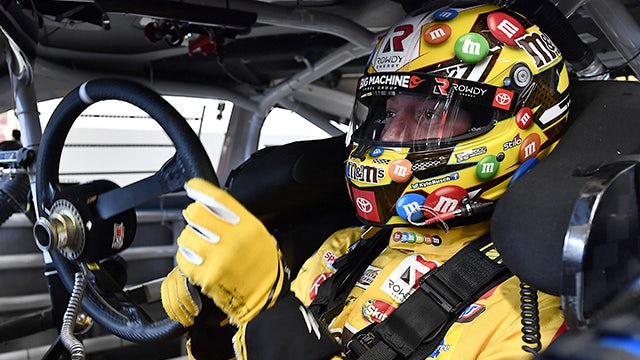
Meeting NASCAR’s requirements
More than 50 engineers at JGR develop these high-performance automobiles using tools that are offered by Siemens Digital Industries Software. NX™ software is used for integrated computer-aided design (CAD) and manufacturing (CAM), and Simcenter™ solutions are used for computer-aided engineering (CAE) for analysis and validation. For the 2019 season, JGR engineers modeled more than 2,000 parts using NX CAD, evaluated them using Simcenter, and manufactured them with NX CAM. The machine shop consists of many Doosan computer numerical control (CNC) machines, a Mitsubishi Laser, a Flow 5 axis water jet, and two Mitsubishi Wire electrical discharge machines (EDM).
“Being able to design, virtually test and machine our parts and assemblies using one package is very important to us,” says Mark Bringle, technical sponsorship and marketing director at JGR. “We do everything we can using Siemens Digital Industries Software tools. It is totally seamless, enabling us to work without doing any translations.”
NASCAR requires every car to fit a detailed formula, including overall weight, to level the playing field. For the 2019 season, teams had to design, test, and build the fleet of cars that conformed to the rule package that NASCAR set out at the start of the season, and they had to update it regularly throughout the campaign.
A new JGR car is constantly being refined and improved as the team seeks to enhance performance and/or reduce weight in almost every system on the car as well as adding features to satisfy new safety regulations and material requirements.
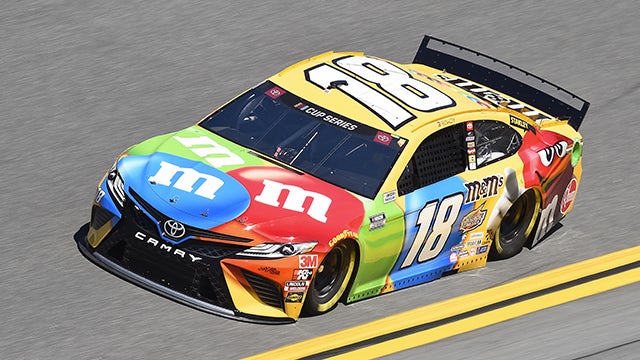
Powering speed with simulation and optimization
Performance on the track can depend a lot on the amount of downforce the car design generates, allowing the teams to make greater use of the 750-horsepower engines in and out of turns. JGR uses Simcenter STAR-CCM+™ software and HEEDS™ software, which are part of the Siemens Xcelerator business platform of software, hardware and services, to look at new designs and ideas for their cars. These tools help the engineers and aerodynamicists to evaluate their ideas to increase the downforce and decrease the drag on their cars; not only on the top of the car, but even more importantly to evaluate the aerodynamic effects on the undercarriage.
With Simcenter STAR-CCM+, JGR uses computational fluid dynamics (CFD) technology to digitally analyze the aerodynamic performance of the entire car. The forces acting on every component and every inch of the car are computed, typically using hundreds of compute cores. Using HEEDS helps JGR extend the CFD simulations to hundreds of designs.
With an aim of increasing downforce and decreasing drag, HEEDS and Simcenter STAR-CCM+ together enable JGR to automatically evaluate the aerodynamics of multiple designs and components digitally. Without making a physical prototype, JGR can evaluate different design ideas before deciding on the best possible one. With a short turnaround time and strict regulations, every team is vying to maximize aerodynamic performance while operating within a small design space. Using Simcenter CFD and design optimization helps JGR meet this challenge.
Once they have identified promising new designs, the team will work up physical prototypes and test and validate those designs in wind tunnels and at track-testing sessions. Another important step the team employs is correlating the results of the physical tests with its digital predictions. This helps them improve digital twin models to provide more accurate guidance in later digital tests on next-generation designs.
Once they move to release a new body design, the team will use quality control methods to make sure the tested designs are accurately transmitted to the track crew. One step in the build process involves scanning each new body and comparing the scan to the comprehensive digital twin. What goes to the track needs to match the designs they developed and tested.
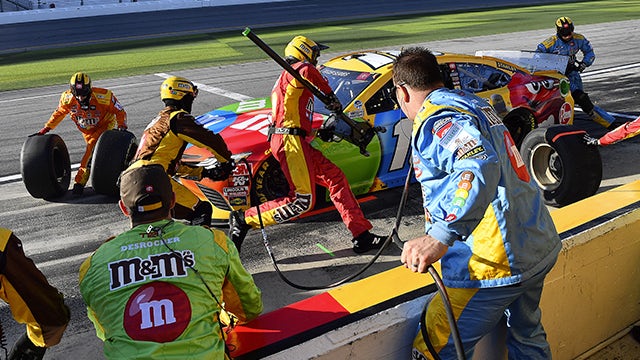
Using NX to improve cars and processes
Using NX not only helps JGR meet requirements, it also enables engineers to improve parts and assemblies to help boost car performance.
For example, engineers redesigned the front suspension draglink to consolidate three parts into one. The new single part not only helps improve cornering, but it is also easier and less expensive to manufacture. Cycle time was reduced by one hour, while setup time was slashed from 42 hours to 9.5 hours, a 77 percent reduction. Since there is now only a single part, no welding is needed.
Once they move to release a new body design, the team will use quality control methods to make sure the tested designs are accurately transmitted to the track crew. One step in the build process involves scanning each new body and comparing the scan to the comprehensive digital twin. What goes to the track needs to match the designs they developed and tested. Using NX to improve cars and processes using NX not only helps JGR meet requirements, but it also enables engineers to improve parts and assemblies to help boost car performance. For example, engineers redesigned the front suspension draglink to consolidate three parts into one. The new single part not only helps improve cornering, but it is also easier and less expensive to manufacture. Cycle time was reduced by one hour, while setup time was slashed from 42 hours to 9.5 hours, a 77 percent reduction. Since there is now only a single part, no welding is needed.
The savings in cycle time and setup time enabled JGR to save $1,117 per part. The part also weighed less, which is crucial for racing in NASCAR. Weight saved in one part of the car can help optimize its weight distribution, which also helps improve performance.
Before the cars are shipped to the next event, parts that have been worn down during the previous race must be replaced. Suspensions must be adjusted for each track. If a rule change has been handed down by NASCAR, the new equipment must be installed and tested before the next race. While all this is going on, the team is also working on future enhancements.
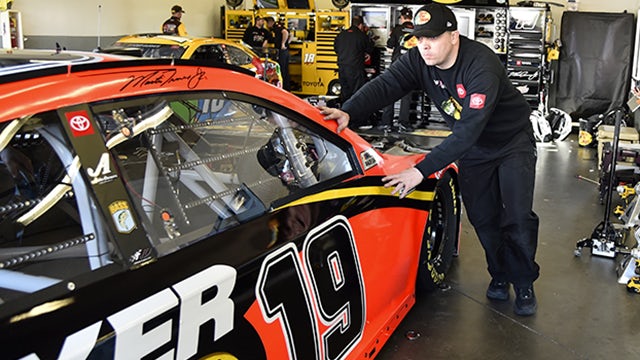
A solid start with NX
Prior to 1998, the crew had tried using CAD/CAM software to speed the production of custom components. Although this was faster than making drawings and then machining parts by hand, data translation between the two software programs caused errors that slowed the process. That problem was solved with the installation of NX, with its fully integrated design, analysis, and manufacturing capabilities.
Soon, parts that previously took days or weeks to manufacture were made on CNC machines and were available within hours. As familiarity with the new software grew and more components were modeled using NX, the team started using the software to virtually evaluate new engine and suspension configurations.
The team also began using the digital environment to optimize weight distribution. Working virtually at first, and later in the shop, engineers stripped excess metal from upper components and applied the weight to areas below the centerline of the axles. This way, they were able to improve handling while maintaining NASCAR’s required vehicle weight.
“We are constantly asking ourselves: ‘How can we make each one of these parts lighter?’” says Bringle. “Anytime you can get weight out of the top end of the car and put it into the bottom end you’ve got a competitive edge.”
The engineering team is making greater use of the NX WAVE™ feature functionality, which is linked to assemblies, and NX Realize Shape™ software, which is used to generate complex surfacing for parts like brake ductwork and air vents. They are also using NX Topology Optimization to uncover new, organic shapes that fulfill fit and function requirements in ways that have previously never been tried.
Weight is always an issue with NASCAR racing. Almost every part and assembly is analyzed using Simcenter. If there is an opportunity to use less material or more lightweight material in a part, JGR will find a way.
“We do tons of simulation and finite element analysis,” says Bringle. “This way we can make sure that a more lightweight part can still withstand the stresses experienced on the track.”
For example, one engineer was replacing a part used in the driver cockpit, a knee knocker. By using new surfacing tools and X-Form functionality, they were able to reduce the time needed to create a new design by 80 percent. Savings like that directly correlate with more ideas being investigated, designed, and virtually tested. Ultimately, it is about getting the ideas out of the engineers’ heads and into the cars as quickly as possible to gain a competitive edge over the rest of the field.
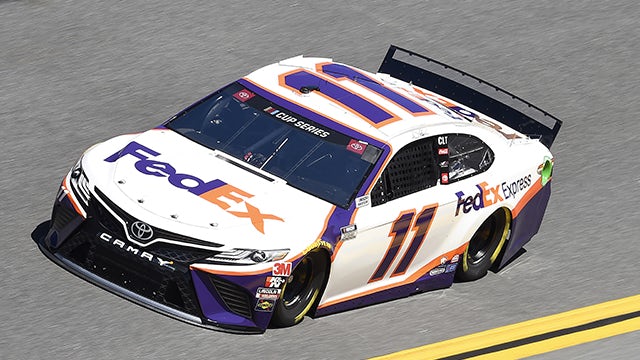
Advanced technology, exemplary race standings
Since then, the team’s use of NX has expanded so greatly that nearly every part and subassembly, including the entire engine, has been modeled using NX. The JGR parts library contains approximately 9,000 parts, 887 assemblies and 3,700 drawing files.
“We’re running 25 CNC machines along with a laser, a water jet, an EDM wire, an EDM sinker and rapid prototyping capabilities using NX CAM,” says Bringle. “We built up our engineering and manufacturing groups to enable us to get from concept to car as quickly as possible, deal with quality issues and retain, leverage and protect company knowledge.”
The result of this approach is almost all parts can rapidly be made in-house.
The team uses NX extensively. Jon Rittle, a design engineer in vehicle dynamics at JGR who does a lot of the modeling, uses the software’s mechanism analysis functionality to test new part and assembly configurations long before metal is cut.
“In the past, it was very difficult to check internal clearances,” Rittle explains. “Using NX, we can visualize all the different parts in motion.”
Geometry created with NX is also being used for additive manufacturing and composite manufacturing operations. As teams strive to produce lighter parts while maintaining (or even enhancing) strength and reliability, creating parts with additive manufacturing technologies and building carbon fiber parts and pieces has become an engineering imperative. These new designs, which are more exotic and have previously unachievable geometries and apply state-of-the-art materials into the processes and designs, are necessary to keep up with everyone else in the garage.
“Since creating our technical partnership with Siemens Digital Industries Software, we are in the championship hunt every year,” says Bringle. “We’ve won the cup championship five times. It’s hard to say how much the software has to do with that, but you have to admit there’s an impressive correlation.”
In the past, it was very difficult to check internal clearances. Using NX, we can visualize all the different parts in motion.
Joe Gibbs Racing
